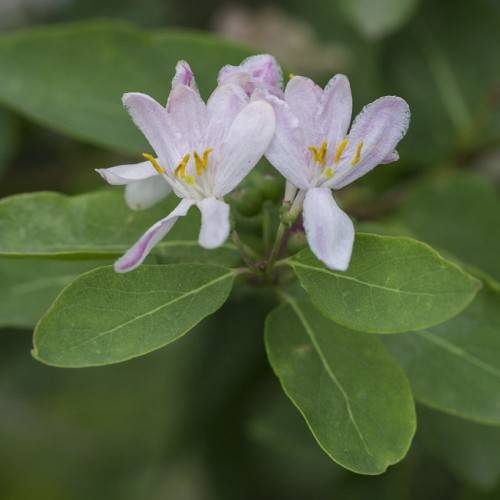
tatarian honeysuckle
Lonicera tatarica 'Alba'
Cycle:
Perennial
Watering:
Average
Hardiness Zone:
3 - 8
Flowers:
Flowers In Spring
Sun:
Full sun,part shade
Leaf:
Yes
Growth Rate:
Low
Maintenance:
Low
Drought Tolerant:
Yes
Invasive:
Yes
Care Level:
Medium
watering
Tatarian honeysuckle (Lonicera tatarica 'Alba') needs regular watering to keep its soil moist but not wet. Water thoroughly when the top 1-2 inches (2.5-5 cm) of soil is dry. During the first few weeks after planting, water deeply every 3 to 7 days. As the plant becomes established, reduce the frequency of watering to once or twice a week. During unusually dry periods, water more frequently, as plants may dry out quickly in hot, dry climates. Avoid over-watering, as this can lead to root rot.
sunlight
Tatarian honeysuckle (Lonicera tatarica 'Alba') prefers full sunlight in order to best thrive. It tolerates partial shade but will flower more profusely and grow more vigorously in a location that receives 6 to 8 hours of direct sunlight a day. This species of honeysuckle likes the sunshine in the morning and late afternoon during the hot summer months when temperatures are higher. It also thrives in cooler temperatures and can tolerate moderate cold exposure in winter, so it can welcome the extra light during the day. For the best growth and flowering, make sure that your Tatarian honeysuckle receives ample sun from as early in the morning as possible, tilting toward the end of the day.
pruning
Tatarian honeysuckle should be pruned in a way that allows for good air circulation, to reduce the risk of fungal diseases. It is best to prune during the late summer or early fall. During the pruning process, it is important to remove the oldest wood, as this promotes new growth and a healthy crown. When pruning, make sure to remove any dead, diseased, and split branches. Also, always make sure to make cuts at the appropriate places. Finally, it is helpful to remove any unruly branches and stems that may be encroaching on other objects.
